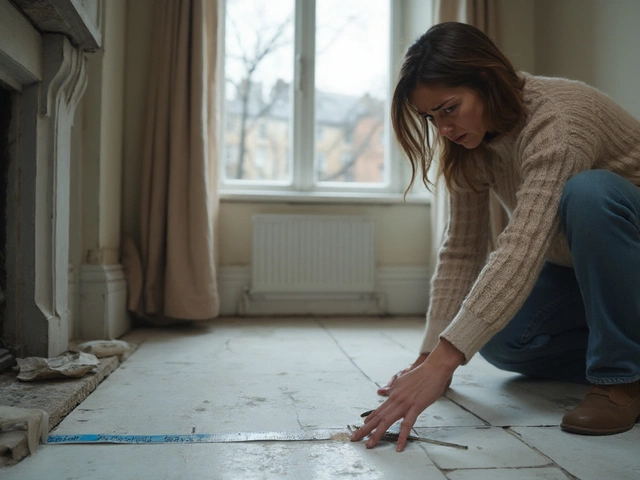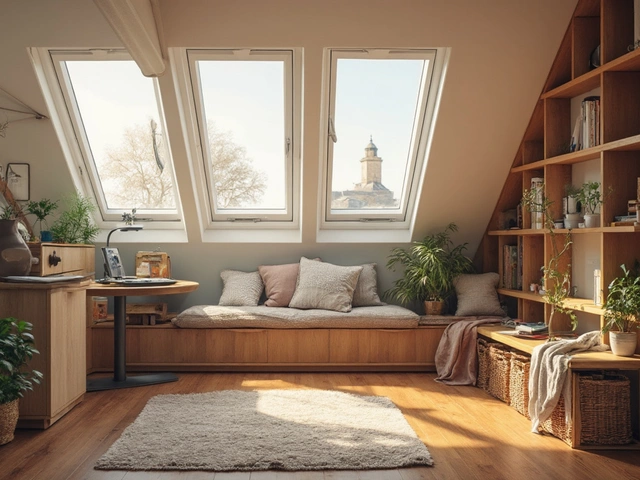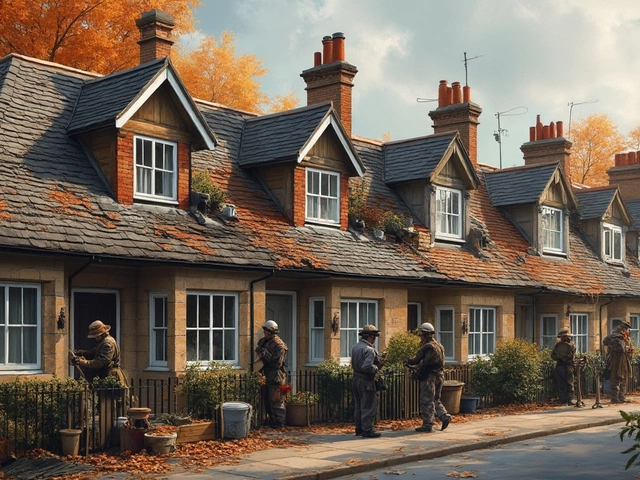If you’ve ever heard a friend grumble about a renovation budget doubling overnight, you’re probably wondering what makes house renovations so expensive. Spoiler: it’s more than just pretty tiles and trendy paint colors. The real wallet-busters are lurking in spots you use every day.
Kitchens usually top the list for renovation costs. It’s not just new cabinets or that fancy fridge you saw on Instagram. Behind every wall, there are pipes, wires, and warranties—each with its own price tag. One surprise plumbing issue, and suddenly you’re shelling out way beyond the sticker price for a new countertop.
Bathrooms hold their own as serious budget traps. Even though they’re tiny compared to the kitchen, updating a bathroom can be just as pricey, if not more. Think waterproofing, plumbing reroutes, and high-end fixtures. If you skimp on hidden stuff, you’ll pay double fixing it later.
- Why Kitchens Break the Bank
- Bathrooms: Small Rooms, Big Costs
- Structural Surprises and Their Price Tags
- Big Ticket Systems: HVAC, Electrical, and Plumbing
- Tips to Save (Without Cutting Corners)
Why Kitchens Break the Bank
Ask any contractor—kitchen remodels are usually the king of renovation costs, and it’s not just because this is where the family hangs out. Kitchens demand a lot of trades all at once: plumbing, electrical, carpentry, tiling, and sometimes even structural work. If you've ever priced out a simple cabinet replacement, you’ve probably had sticker shock already.
First, there’s the sheer amount of things packed into one room. Cabinets eat up a third or even half your budget, especially if you want them custom. According to a 2024 national report from HomeAdvisor, the average U.S. kitchen renovation cost landed at around $26,500, but upscale projects can attack your savings to the tune of $60,000 or more.
| Kitchen Renovation Item | Avg. Cost Range (USD) |
|---|---|
| Cabinets | $8,000 - $20,000 |
| Appliances | $2,500 - $12,000 |
| Countertops | $2,000 - $6,000 |
| Flooring | $1,500 - $5,000 |
| Labor | Up to 30% of total |
The thing is, it’s not just what you see—most of your money disappears behind the scenes. Plumbing upgrades, rewiring for new appliances, permits, and code upgrades eat up a chunk that no one ever Instagrams. Got an older house? Prepare to be hit with costs for outdated wiring and pipes every time you open up a wall. And don’t forget about moving walls or opening up the space; structural tweaks can make your budget skyrocket.
Another sneaky expense: project delays. If your kitchen is out of action for weeks, that means takeout bills stack up fast. When Lara and I remodeled our kitchen, our son Sawyer thought pizza was a nightly necessity—it got old (and expensive) way before the work was done.
If you want to bring your home renovation costs down, always get multiple bids from contractors, know your must-haves versus your wish list, and budget at least 15% extra for surprises. Trust me, there will be some.
Bathrooms: Small Rooms, Big Costs
Don’t let the square footage fool you. Bathrooms might look harmless, but they regularly set home owners back more per foot than any other part of the house. It’s the perfect storm: water, pipes, tricky layouts, and the need for everything to be waterproof—otherwise, you’re just creating future problems nobody wants to deal with.
The average bathroom remodel in the US hovers around $11,000—sometimes less for a powder room, but master bathrooms can easily blow past $25,000 if you’re moving walls or relocating plumbing. That’s why home renovation costs seem to spike here even if you keep it simple.
Here’s where all that money goes:
- Plumbing: Everything from replacing old pipes to moving a shower or toilet costs labor and sometimes requires opening up walls or floors.
- Waterproofing: Skip this and you’ll regret it. Quality membranes, pan liners, and pro work don’t come cheap, but they save a fortune down the road from mold and water leaks.
- Tile: Labor is pricey, especially with custom shower inlays or patterns. Even basic ceramic tiles add up fast in materials and time.
- Fixtures: Sinks, faucets, toilets, and shower hardware have a huge price range. It’s easy to burn money here for looks or brand names.
- Ventilation and electrical: Code requirements mean new exhaust fans, GFCI outlets, and careful planning. Adding heated floors or smart mirrors? That’ll cost even more.
Here’s a look at where costs typically stack up in a standard bathroom overhaul:
| Bathroom Element | Typical Share of Budget |
|---|---|
| Labor | 40-60% |
| Fixtures and Appliances | 15-25% |
| Tile & Flooring | 10-20% |
| Plumbing & Electrical | 10-15% |
| Other (Paint, Cabinets, Lighting) | 5-15% |
Quick tip: Focus your budget on the stuff you’ll touch every day—showers, faucets, and toilets. Ask about multi-task tradespeople—folks who can handle both tile and plumbing, for example. And ALWAYS check if you really need to move plumbing. Leaving things in place can easily cut your costs in half.
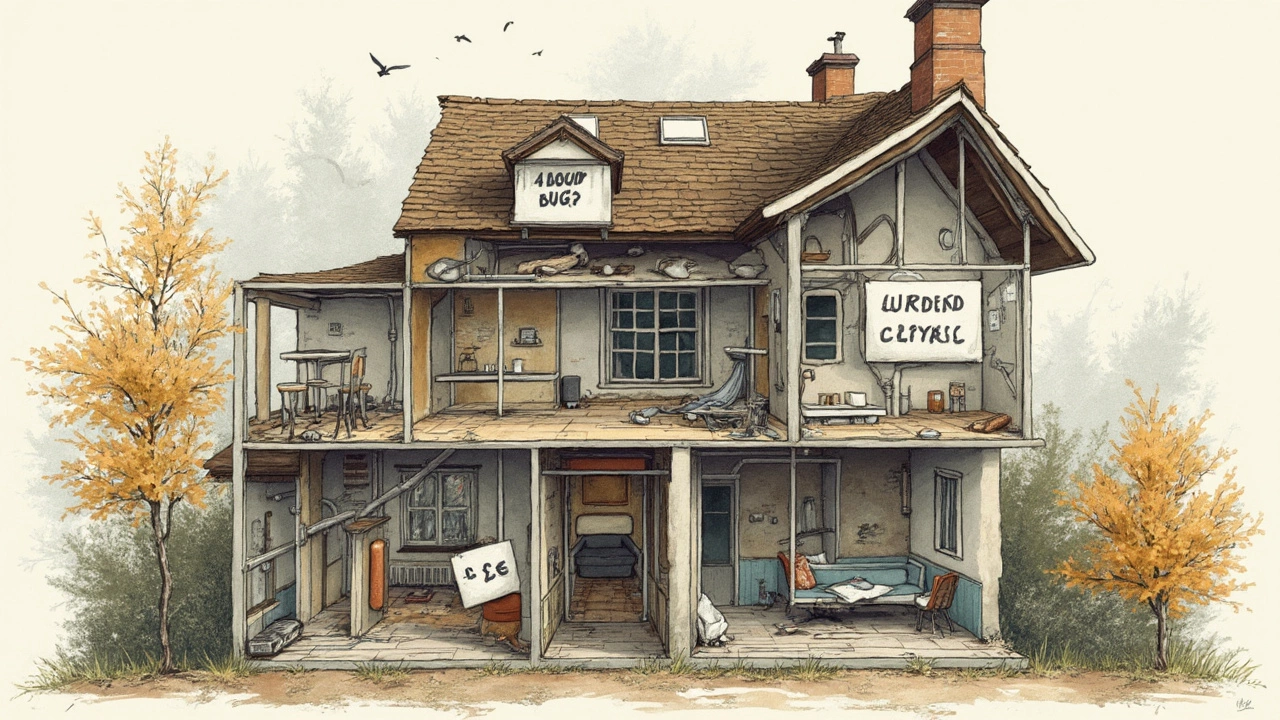
Structural Surprises and Their Price Tags
Everybody expects to spend on a new vanity or fresh paint. But real headaches (and big costs) often come from stuff you can’t see. Structural surprises are where a home renovation can turn into a money pit fast.
Common culprits? Foundation cracks, rotten floor joists, out-of-date electrical panels, or termite damage. These problems rarely show up until you open up the walls or floors. That means your $1,500 paint job could get sideswiped by a $15,000 foundation bill. For example, fixing a sagging foundation averages anywhere from $4,000 up to $25,000, depending on where you live and how bad it is.
One thing you can do to protect yourself is pay for a good inspection before you start your home renovation. Professional inspectors catch hidden problems early. Sometimes sellers try to patch cracks or hide water damage, and it only becomes obvious once you start tearing things up.
Here’s a quick look at what these surprises can cost:
| Structural Issue | Typical Cost Range |
|---|---|
| Foundation Repair | $4,000 - $25,000 |
| Subfloor Replacement | $3,000 - $10,000 |
| Roof Framing Repairs | $2,000 - $15,000 |
| Load-Bearing Wall Changes | $5,000 - $20,000 |
It’s not all doom and gloom, though. If you plan for unexpected structural costs in your renovation budget—think 10-20% extra—you’re a lot less likely to panic when something pops up. And trust me, at least one weird thing always does.
Big Ticket Systems: HVAC, Electrical, and Plumbing
This is where home renovation costs really skyrocket—removing old furnaces, rewiring a house from the 70s, or ripping out old pipes eats through a budget faster than kitchen upgrades. The scariest part? Most folks don’t even notice these systems until something breaks or starts leaking.
HVAC (heating, ventilation, and air conditioning) systems are a beast. If you need a full replacement—including ductwork—it can set you back anywhere from $7,000 to $20,000, depending on your house size and local rates. Even just swapping an old central AC for a modern, energy-efficient model isn’t cheap. Don’t forget, a lot of older homes need more insulation or new vents to make things work right. The tech is cool, but you’ll pay for it.
Next up: electrical systems. If your house still has two-prong outlets or old-school fuse boxes, it’s time for an overhaul. Full rewiring can run $8,000 to $15,000 or more, especially if you want to add outlets for all your devices and smart gadgets. Don’t ignore this—outdated wiring is a fire hazard, and insurance companies are starting to care more about it.
And then there’s plumbing. Replacing all the pipes—especially in older homes with galvanized steel or even lead—can cost $10,000 or higher. Sometimes, you’ll just need to update sections, but if you ever spot old, rusty pipes or notice weird smells from drains, brace yourself: a huge bill may be coming your way.
To give you a snapshot of these numbers, here’s a quick breakdown:
| System | Low Cost (USD) | High Cost (USD) |
|---|---|---|
| HVAC | $7,000 | $20,000 |
| Electrical (full rewire) | $8,000 | $15,000+ |
| Plumbing (whole house) | $10,000 | $18,000 |
Here’s the thing—these systems are not the place to cut corners just to save cash. If you’re planning a home renovation, always budget extra for them. A proper inspection is worth the cost, and sometimes you can phase upgrades over a few years to avoid a giant bill all at once.
- Always get a licensed pro for HVAC, electrical, and plumbing work—no exceptions.
- Expect to pay 20% more if your house is older or there’s tricky access.
- Ask about warranties for new systems; the peace of mind is worth it.
- Look for rebates on energy-efficient upgrades. Utility companies often help out.
When it comes to the big-ticket home systems, it’s better to fix or upgrade right the first time. Nobody wants a mid-winter furnace meltdown or surprise pipe burst in the middle of the night.
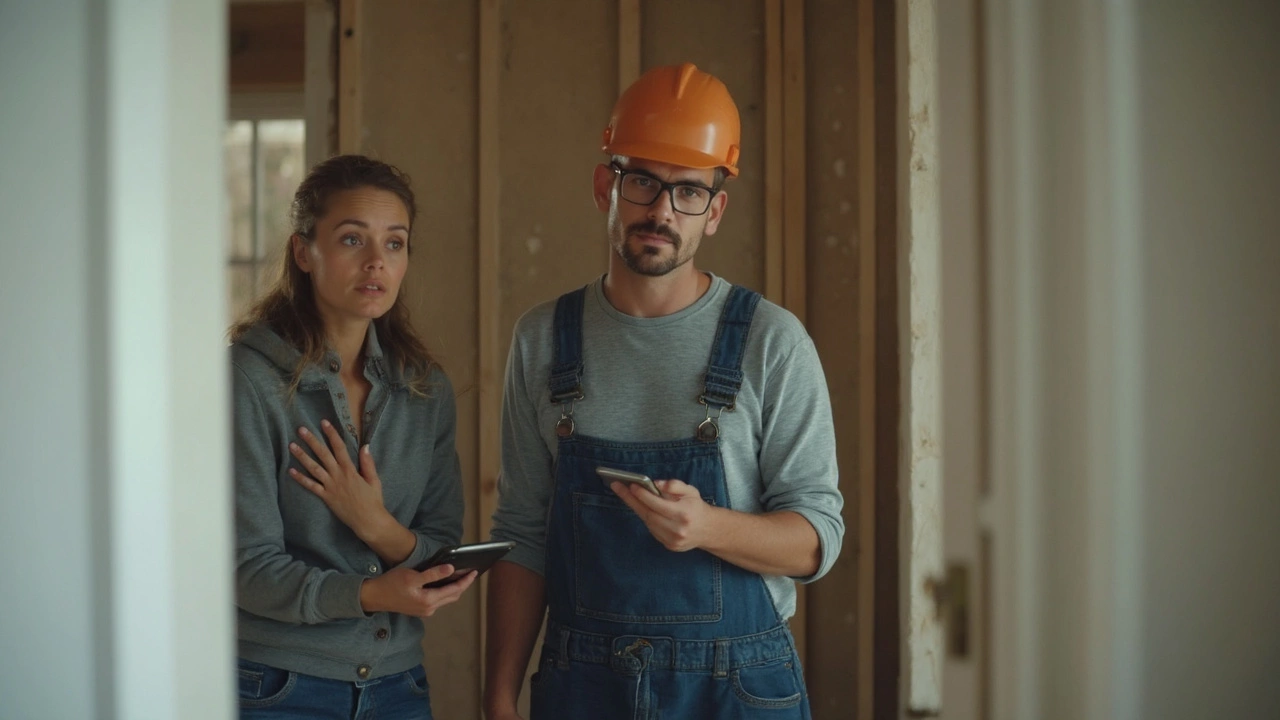
Tips to Save (Without Cutting Corners)
You don’t have to blow the budget to have a solid home renovation. The trick is knowing where money matters and where you can skip the splurge without setting yourself up for trouble down the road.
- Plan Every Detail Before You Start: Changing your mind mid-renovation costs big time. Map out your kitchen or bathroom upgrade before swinging a hammer. Decide on finishes, fixtures, and—if needed—appliance spots so you don’t pay for last-minute changes.
- Keep the Layout: Moving plumbing or electrical systems around is a giant budget killer, especially in kitchen remodels or bathroom upgrades. If you don’t have to move a sink or toilet, don’t. You’ll save thousands on hidden costs you can’t even brag about.
- Shop Smart for Materials: Hunt for deals and compare prices—don’t just take your contractor’s ‘go-to’ supplier. Sometimes tile on clearance can look just as nice as the designer stuff. Same goes for lighting and fixtures.
- DIY What Makes Sense: You can save a nice chunk if you paint, handle demolition, or deal with the easy stuff. Just don’t touch wiring or plumbing unless you’re licensed. Better to pay a pro than to call one for an emergency.
- Don’t Skip the Contingency Fund: No matter how good your plan is, surprises happen. Experts recommend you add 15-20% to your budget for those ‘oh no’ moments—especially old houses.
Here’s a quick peek at what different items can cost if you stick with standard options versus going high-end. Prices vary by region, but this table paints a pretty clear picture.
| Renovation Item | Standard Price Range ($) | Luxury Price Range ($) |
|---|---|---|
| Kitchen Remodel | 15,000 – 30,000 | 50,000 – 100,000+ |
| Bathroom Remodel | 8,000 – 15,000 | 30,000 – 60,000+ |
| HVAC Replacement | 7,000 – 12,000 | 15,000 – 25,000 |
| Electrical Rewire | 5,000 – 9,000 | 15,000+ |
Don’t be shy about asking contractors for detailed quotes and references. Double-check for licenses and insurance. Good pros want you to ask questions—they know it means you won’t skimp in the wrong places. And remember, investing in efficient HVAC replacement or solid plumbing pays you back in lower bills and fewer headaches later on.



